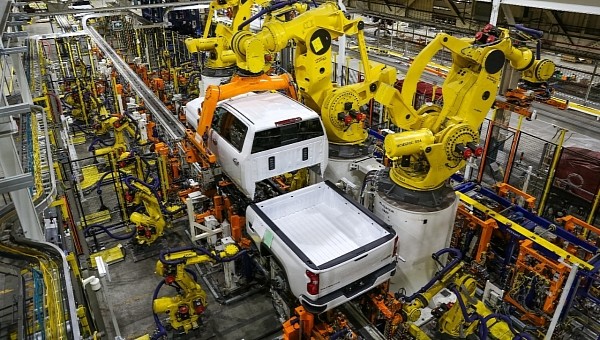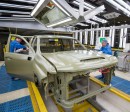While most industries out there ended up on their knees following the debut of the pandemic, chipmakers across the world saw their sales going through the roof.
With so many people starting working remotely overnight, the demand for chips absolutely exploded, especially in the computing market. Sales of PCs, laptops, tablets, and phones recorded one of the biggest increases in history, so chipmakers simply weren’t able to produce as many chips as required.
This is how the entire world ended up struggling with a very severe chip crunch.
The automotive industry was hit the hardest, as companies in this sector had no other option than to temporarily halt production or simply sell cars without certain systems simply because they couldn’t find enough semiconductors to power everything.
Now that the demand for chips is aligning with the production, semiconductor manufacturers themselves are also recording slowing sales. The competition is therefore becoming fiercer once again, and as a result, the prices are going down.
Taiwan has so far been one of the main hubs for the production of chips, and with major investments in U.S.-based capacity, another player could soon step in and secure a substantial number of orders.
China, however, is getting ready for a very fierce battle in the chip sector. This is why the local government is reportedly planning to help local companies with a very aggressive subsidy program that would eventually let them cut prices. In other words, chips built in China could be a lot more affordable, eventually forcing all the other semiconductor manufacturers to cut the chip prices as well.
China’s plan is as simple as it could be: by bringing down the prices, the local chipmakers should be able to secure more orders, and in the long term, this is critical, especially as Taiwan is already leading the market and the U.S. is emerging as a more powerful competitor.
It remains to be seen if China’s efforts can eventually bring things back to normal in the automotive sector as well, especially because no specifics on the subsidy program have been announced, but at this point, everybody is still waiting for the production of cars to return to pre-2020 levels.
This is how the entire world ended up struggling with a very severe chip crunch.
The automotive industry was hit the hardest, as companies in this sector had no other option than to temporarily halt production or simply sell cars without certain systems simply because they couldn’t find enough semiconductors to power everything.
Now that the demand for chips is aligning with the production, semiconductor manufacturers themselves are also recording slowing sales. The competition is therefore becoming fiercer once again, and as a result, the prices are going down.
Taiwan has so far been one of the main hubs for the production of chips, and with major investments in U.S.-based capacity, another player could soon step in and secure a substantial number of orders.
China, however, is getting ready for a very fierce battle in the chip sector. This is why the local government is reportedly planning to help local companies with a very aggressive subsidy program that would eventually let them cut prices. In other words, chips built in China could be a lot more affordable, eventually forcing all the other semiconductor manufacturers to cut the chip prices as well.
China’s plan is as simple as it could be: by bringing down the prices, the local chipmakers should be able to secure more orders, and in the long term, this is critical, especially as Taiwan is already leading the market and the U.S. is emerging as a more powerful competitor.
It remains to be seen if China’s efforts can eventually bring things back to normal in the automotive sector as well, especially because no specifics on the subsidy program have been announced, but at this point, everybody is still waiting for the production of cars to return to pre-2020 levels.






